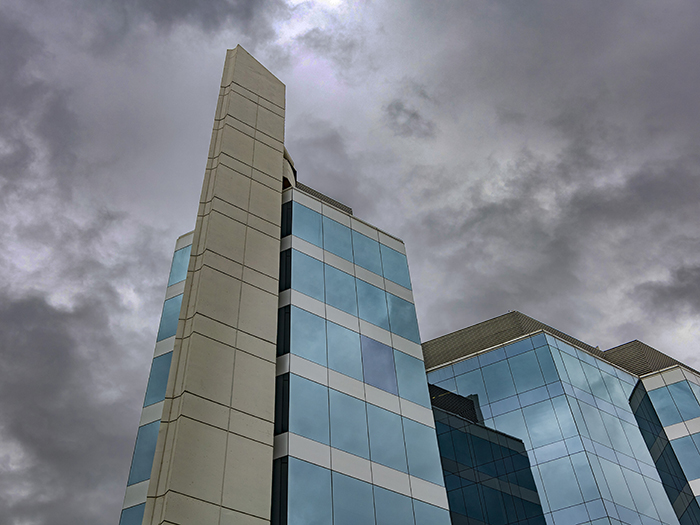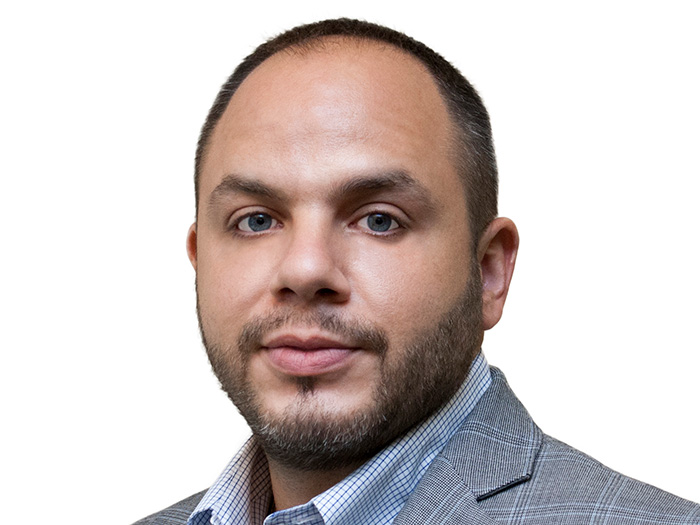Met Cat Meets Nat CAT: Understanding Parametric Reputation Risk Insurance for Metaphorical Catastrophes Through a Natural Catastrophe Lens
A new framework can further open the market for parametric insurance solutions to risks long felt to be uninsurable. A fortuitous emerging need for insuring director and officer losses adjudicated in the court of public opinion not covered by liability insurance is both an immediate opportunity for strategic risk transfer and a proof point for parametric solutions beyond natural catastrophes such as natural earthquakes to metaphorical earthquakes — reputation crises.
Insurers and insureds are “turning to alternative risk transfer for […] emerging risks that are otherwise difficult to insure.”
An industry that is using parametric technology to insure losses from natural disasters caused by wrathful deities can now also provide meaningful insurance for losses from reputation disasters caused by emotional mortals. The 4-M parametric framework of metric, model, monitor and market for natural earthquakes disclosed at the 2023 Hawaii Captives Insurance Conference makes parametric insurance for metaphorical earthquakes easy to back, underwrite, broker and bind.
The timing is good.
Earth-shaking news from boardrooms, according to PwC, is that a “record-high” 25% of board directors want two or more of their colleagues replaced.” Almost 50% want at least one peer to go. FT Specialist Agenda reports that this seismic shift in boardroom collegiality is due to fear of reputation risk and uninsured financial losses including lost board compensation, reduced opportunities for leadership and consulting, and clawbacks.
Put simply, losses from an impaired personal reputation can be substantial.
It’s been four decades since directors in the courts of law were materially personally exposed by their service. Now they are personally exposed in the courts of public opinion. Parametric Side R insurance can do for reputation risk what Sides A, B, and C did for liability risk. This new 4-M parametric natural catastrophe framework shows how.
Natural and Metaphorical Earthquakes Are Similar in Many Ways
Earthquake Risk
The sudden displacement of a section of Earth’s crust causes earthquakes. They can happen anytime and anywhere. Probabilistic models and our physical knowledge of our planet can help predict earthquake location, likelihood and cost of loss.
Better construction design, materials, foundations and structural systems can mitigate earthquake damage risk. So can better and better-enforced building codes.
Nevertheless, even in developed countries, seismic events may cause fatalities, injuries, and ample economic loss in the form of damaged property and interrupted business operations. They may impair balance sheets and cash flow.
Reputation Risk
The risk of economic damage from suddenly emotional disappointed stakeholders is the essence of reputation risk. Anger from unmet expectations is impossible to forecast, and can happen to any company or its board. Probabilistic models and our knowledge of behavioral economics can help predict which firms are more likely to experience a crisis, and the expected cost of loss.
Managing expectations and preempting mission-critical process failures can mitigate reputation risk.
Nevertheless, even in well-governed companies, outsized stakeholder expectations followed by disappointment can lead to expectations for cash flow shortfalls due to customers boycotting; employees fleeing; investors selling; lenders are adjusting interest rates up; regulators enforcing; and social license holders protesting.
Investors may seek to hold directors and officers liable for the stramash in the courts of law; while they, along with other stakeholders, will almost certainly hold them culpable in the courts of public opinion. For leadership, this could be career-impairing.
Natural and Metaphorical Earthquakes Differ
One major difference between the two catastrophe risks is their accounting treatment by carriers.
Typically, losses from acts of God drive the property book while losses from acts of Man drive the liability book. This has no bearing on how insureds experience losses, but it has historically challenged carrier’s ability to provide enterprise-level outcome-based (read, parametric) insurance.
Common Framework for Parametric Insurance
The successful transfer of risk using a parametric strategy requires only that the insurer and insured agree on a reasonable protocol to characterize the risk.
Standardized forms and models, however, simplify the execution of large-limit syndicated or insurance-linked securities (ILS)-enhanced risk transfer solutions. This is true for major natural catastrophe covers; or for large aggregate limit reputation or enterprise-outcome risk covers.
One standard model is the 4-M framework comprising the metric, the model, the monitoring agent, and the market, after Franco.
4-M Framework Applied to Nat CAT and Met Cat Insurance
1) Parametric Earthquake Insurance
Metric: Parametric insurance for earthquake has two alternative trigger systems. The first is based on the location of the epicenter, the depth of the event, and the moment magnitude, which is a measure of the energy liberated. The second us based on a set of measured or estimated ground motion intensities distributed across the region that contains the assets of interest.
Model: Seismic models typically consist of four larger modules typically encapsulated into an “event catalog,” an “intensity’ module, an “exposure vulnerability” module, and a “financial” module. These simulate respectively the occurrence of events in a Monte Carlo framework, the transmission of their energy and conversion to ground motion fields, the impact on structures, and its translation into financial loss.
Monitoring Agency: Any agency that monitors the parameters used in the transaction can be used to trigger a payout against the contract established by the parties. The U.S. Geological Survey is the agency that has provided these measurements and estimations with transparency for the longest time and are used routinely.
Market: Many markets support earthquake parametric risk transfer including the reinsurers Swiss Re and Munich Re, large insurers such as Berkshire Hathaway or AXA, investment funds such as Nephila or Femat, and managing general agents like Descartes.
2) Parametric Reputation Insurance
Metric: As one example, my company, Steel City Re, has a parametric insurance for reputation that uses a triple trigger system that includes two binary conditions and a cash flow-based indexed metric. It estimates the volatility and direction of change of stock price.
Model: The reputation value index consists of four non-black box modules representing expectations for “revenue,” “net income,” “optimism,” and “uncertainty.” These reflect the economic impact of expected stakeholder behaviors, including financial losses, without being oversensitive to irrational investor actions.
Monitoring Agency: A third-party aggregator provides raw data that Steel City Re transforms into reputation values metrics. It has been doing so on a weekly basis with metrics dating back to 2001. Its data have helped hedge funds arbitrage reputation value for 15 years, and have been informing a public equity index maintained by S&P Global, INDEXCME: REPUVAR for more than a decade.
Market: Tokio Marine Kiln since 2017, and others.
Risks to Insurer and Insured
The 4-M framework helps zero in on the two major risks associated with parametric insurance: “wrong” models” and fraud on monitors.
Parametric insurance is insurance to a model. All models, George Box observed, are wrong. Some, like the models powering the $18bn (2023 value) parametric insurance market, are useful. Just like the risk that a deductible will preclude payment, a model creates basis risk. The parametric model for damage caused by Hurricane Beryl caused Jamaica to miss out on payment by just nine millibars.
Messing with measurements made by a monitor is fraud. Two Coloradan farmers were recently jailed for tampering with weather stations to receive false parametric insurance payments. While this is worrisome with natural catastrophe events involving inherently ephemeral events, reputation risk metrics substrates are non-volatile and the transformation algorithms are 100% auditable.
Nevertheless, as the Libor data tampering scandal affirmed, sophisticated financial solutions attract sharp rascals.
Generalizable Parametric Strategy for Insuring 21st Century Risk
Parametric reputation insurance is a timely offering for directors seeking to mitigate the fear and costs of reputation risk, for themselves or their peers. The 4-M model makes clear that engineering a sophisticated effective solution is well within the industry’s power alley. For widespread acceptance outside the boardroom, however, risk managers and carriers need to look at this opportunity in a new way.
Many risk managers think of reputation risk as a secondary phenomenon, just as they once thought of its better-known cousin, liability risk. Cultural changes in the 1980s created a market for liability insurance and spurred new strategies for risk mitigation. Cultural changes are now driving reputation risk into the boardroom.
Many carriers struggle with the accounting treatment of this type of all-risk outcome-based solution. Parametric technology easily crosses the property vs. casualty accounting divide, which can benefit large clients who, indifferent to carriers’ bookkeeping, worry about losses from acts of both God and Man that impact their most critical outcome —stock price.
Reputation insurance is “resilience insurance” for directors; at scale for an enterprise, it is corporate “resilience insurance.” It is also a proof point for parametric strategies beyond natural catastrophes for many 21st century risks that would benefit investors, carriers, brokers and insureds alike. &
The author acknowledges the invaluable guidance of Guillermo E. Franco, PhD, ARe, managing director, global head of CAT risk research, Guy Carpenter, and developer of the 4-M parametric framework.










